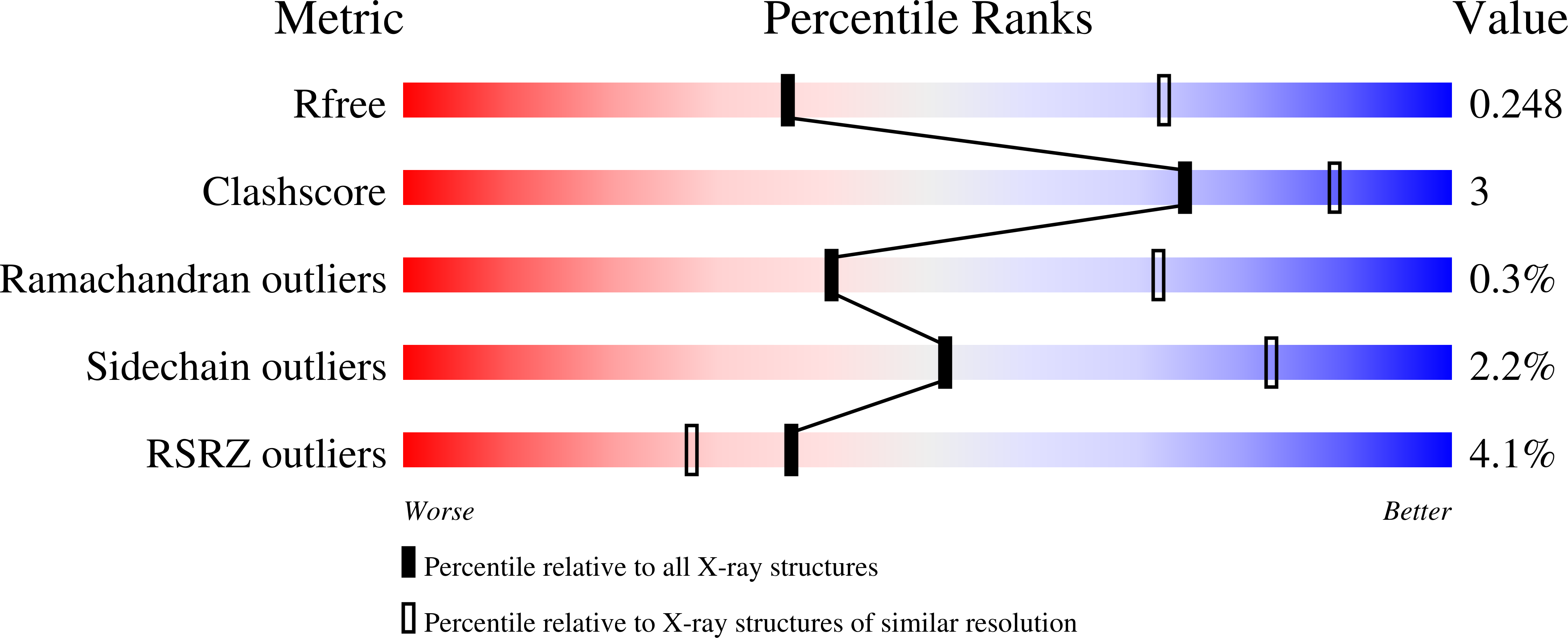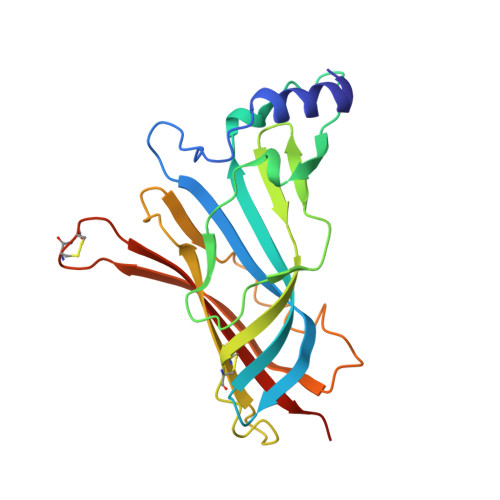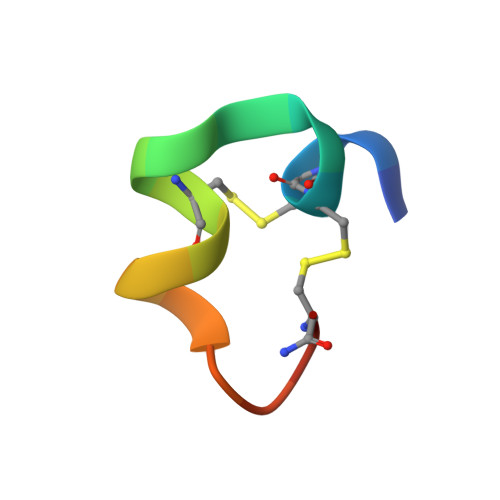Structural mechanisms for alpha-conotoxin activity at the human alpha 3 beta 4 nicotinic acetylcholine receptor.
Abraham, N., Healy, M., Ragnarsson, L., Brust, A., Alewood, P.F., Lewis, R.J.(2017) Sci Rep 7: 45466-45466
- PubMed: 28361878
- DOI: https://doi.org/10.1038/srep45466
- Primary Citation of Related Structures:
5T90 - PubMed Abstract:
Nicotinic acetylcholine receptors (nAChR) are therapeutic targets for a range of human diseases. α-Conotoxins are naturally occurring peptide antagonists of nAChRs that have been used as pharmacological probes and investigated as drug leads for nAChR related disorders. However, α-conotoxin interactions have been mostly characterised at the α7 and α3β2 nAChRs, with interactions at other subtypes poorly understood. This study provides novel structural insights into the molecular basis for α-conotoxin activity at α3β4 nAChR, a therapeutic target where subtype specific antagonists have potential to treat nicotine addiction and lung cancer. A co-crystal structure of α-conotoxin LsIA with Lymnaea stagnalis acetylcholine binding protein guided the design and functional characterisations of LsIA analogues that identified the minimum pharmacophore regulating α3β4 antagonism. Interactions of the LsIA R10F with β4 K57 and the conserved -NN- α-conotoxin motif with β4 I77 and I109 conferred α3β4 activity to the otherwise inactive LsIA. Using these structural insights, we designed LsIA analogues with α3β4 activity. This new understanding of the structural basis of protein-protein interactions between α-conotoxins and α3β4 may help rationally guide the development of α3β4 selective antagonists with therapeutic potential.
Organizational Affiliation:
IMB Centre for Pain Research, Institute for Molecular Bioscience, The University of Queensland, St. Lucia, Queensland 4072, Australia.















